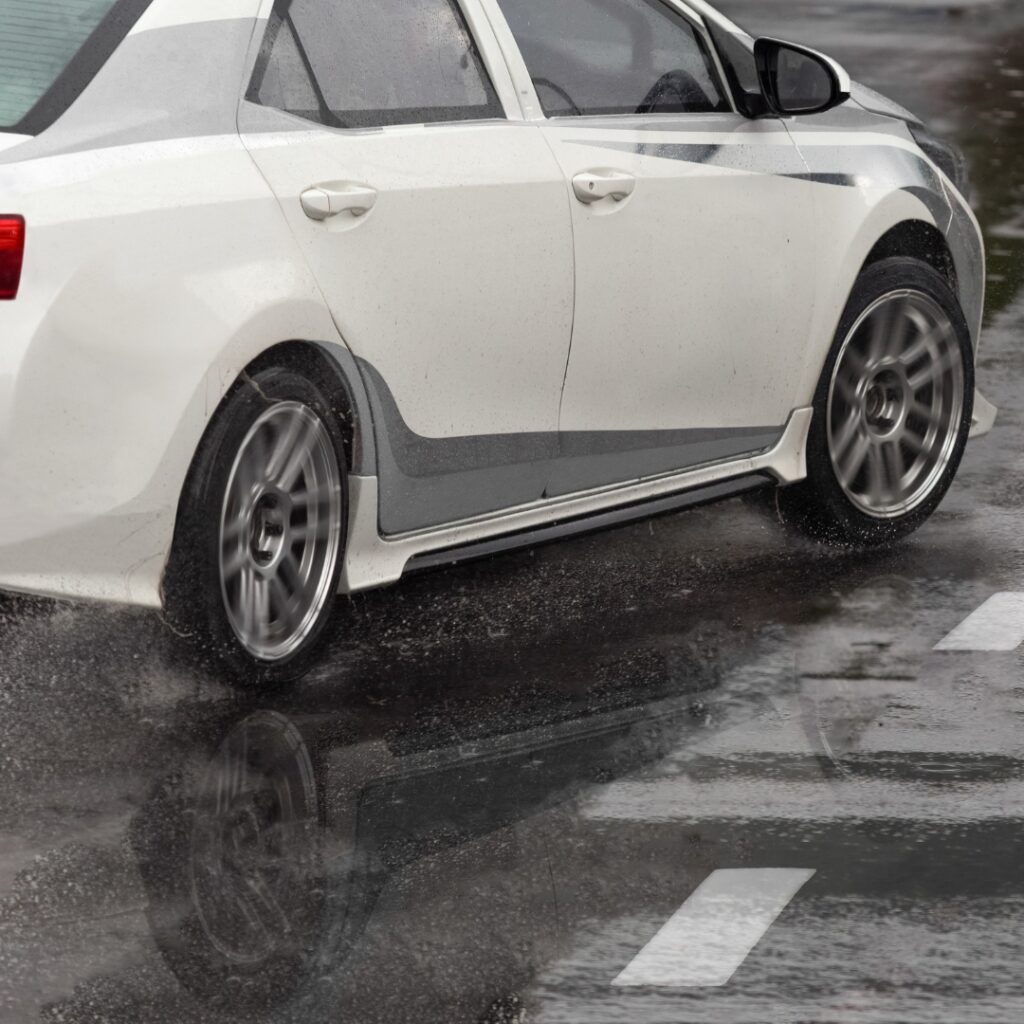Extreme weather conditions can significantly impact our daily lives, posing various challenges and risks, increasing the amount of car accidents caused by rain. One such weather phenomenon that often leads to increased hazards on the roads is heavy rainfall. While rain is essential for sustaining life and maintaining ecosystems, it can also be a major contributor to car accidents when it becomes extreme. In this blog, we’ll delve into the various ways in which car accidents caused by rain can have devastating affects and discuss safety measures to minimize the risks.
What are the Risks of Extreme Weather Conditions
Reduced Visibility:
One of the primary concerns during heavy rainfall is reduced visibility on the roads. Rainfall, especially when accompanied by strong winds, can create a curtain of water that impairs a driver’s ability to see clearly. This reduced visibility can make it challenging to spot other vehicles, road signs, and potential hazards promptly, increasing the risk of car accidents caused by rain.
Hydroplaning:
Another significant danger associated with heavy rain is hydroplaning. This occurs when a layer of water builds up between the tires of a vehicle and the road surface, causing the tires to lose contact with the road. As a result, drivers may experience a loss of control, making it difficult to steer or brake effectively. Hydroplaning is more likely to happen at higher speeds, emphasizing the importance of slowing down during rainy conditions to reduce the amount of car accidents caused by rain.
Slippery Roads:
Rain can turn roads into slippery surfaces, especially in the initial stages of precipitation. Oil, dust, and debris on the road mix with rainwater, creating a slick surface that reduces tire traction. This lack of traction increases the likelihood of skidding and sliding, making it challenging for drivers to maintain control of their vehicles. In such conditions, even routine maneuvers like turning or braking can become hazardous.
Aquaplaning:
Aquaplaning is an extreme form of hydroplaning that occurs when a vehicle completely loses contact with the road due to a thick layer of water. This can result in a complete loss of control, leading to severe accidents. Drivers should be particularly cautious in areas prone to flooding or where water tends to accumulate on the road surface.
Increased Stopping Distances:
Rainy conditions also extend the distance required for vehicles to come to a complete stop. Wet roads reduce the effectiveness of braking systems, requiring drivers to increase their following distances. Failing to account for this increased stopping distance can lead to rear-end collisions, particularly in heavy traffic or congested areas.
Safety Tips for Driving in Heavy Rain:
- Reduce Speed: Slow down and drive at a speed appropriate for the road conditions. This helps to minimize the risk of hydroplaning and allows for better reaction time.
- Maintain a Safe Following Distance: Increase the distance between your vehicle and the one in front of you to ensure sufficient stopping distance.
- Use Headlights: Turn on your headlights to improve visibility for yourself and other drivers. Avoid using high beams in heavy rain, as they can reflect off raindrops and further reduce visibility.
- Check Tires: Ensure that your tires are in good condition and properly inflated. Worn-out tires with low tread depth are more prone to hydroplaning.
- Avoid Cruise Control: Refrain from using cruise control in rainy conditions, as it may increase the risk of hydroplaning. Manual control of the vehicle allows for better adaptability to changing road conditions.

Why You Should Hire Super Woman Super Lawyer
Extreme weather, such as heavy rain, poses unique challenges for drivers, increasing the likelihood of car accidents. Understanding the risks associated with rain-related accidents and adopting appropriate safety measures can contribute to safer roads during adverse weather conditions. By being vigilant, adjusting driving behaviors, and staying informed about weather forecasts, drivers can help reduce the impact of extreme weather on road safety. Remember, it’s not just about reaching your destination; it’s about getting there safely, especially when the weather takes a turn for the worse. If you or a loved one have been injured in an accident caused by extreme weather conditions, contact Super Woman Super Lawyer today for a free case consultation.
 Maryam Parman
Maryam Parman










